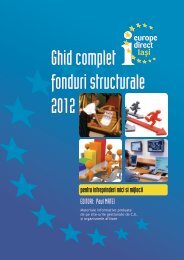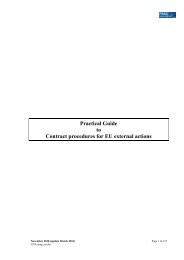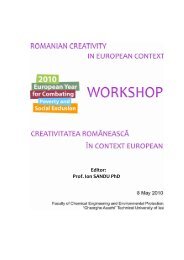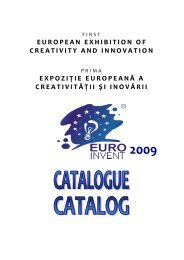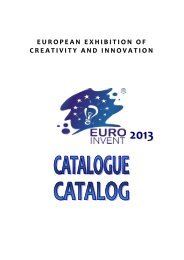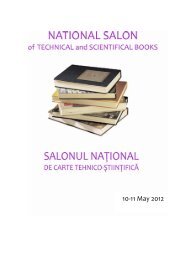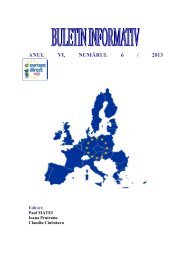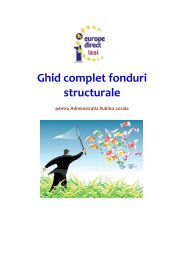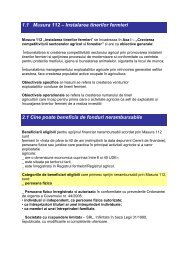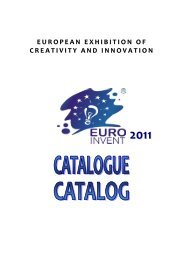2012 - Europe Direct Iasi
2012 - Europe Direct Iasi
2012 - Europe Direct Iasi
You also want an ePaper? Increase the reach of your titles
YUMPU automatically turns print PDFs into web optimized ePapers that Google loves.
EUROINVENT <strong>2012</strong><br />
Institution “Gheorghe Asachi” Technical University of <strong>Iasi</strong><br />
This research project aims to study the possible uses of the<br />
“water footprint” instrument in order to improve the sustainable<br />
management of water resources, considering the interactions<br />
between stakeholders.<br />
The main elements of originality proposed by this project are the<br />
integration aspects of this instrument, water footprint, and<br />
contributions to its development and adaptation so as to improve<br />
the efficiency of water resource management. The two stages of<br />
studying the water footprint assessment, the calculation and the<br />
impact and risk assessment are very important issues in<br />
formulating strategies for an efficient use of water resources.<br />
Description<br />
The project activities will be conducted by using the following<br />
logical sequence: critical analysis of the water resources<br />
management at the industrial facility or regional level, a case<br />
study related on the “water footprint” instrument use for an<br />
industrial activity, highlighting the major impacts and risks and<br />
at the end, a final verification related to how this tool can<br />
respond to various changes that may occur in the sustainable use<br />
of water resources in Romania. The study also will follow up on<br />
the possibility of integrating this tool with other specific<br />
instruments such as integrated impact and risk assessment or life<br />
cycle assessment in order to reduce the risk of pollution and<br />
anthropogenic impacts on water resources.<br />
X. 12.<br />
MWNT- reinforced PA6 nanocomposites obtained by<br />
Title<br />
electrospinning<br />
Authors Monica Alina Călin<br />
“Gheorghe Asachi” Technical University of Iaşi, Faculty of<br />
Institution<br />
Textile, Leather and Industrial Management<br />
Nanotechnology plays an essential role in the textile industry. It<br />
involves a controlled manipulation of nanoscale structures and<br />
their integration into larger materials, of different scales. In the<br />
textile field, nanotechnology refers mainly to the fabrication of<br />
nanofibers or the surface modification of fibers or fabrics. In<br />
order to produce nanofibers the electrospinning method is used.<br />
Description Its principle is based on drawing a jet of polymer solution<br />
through the electrical field in order to obtain synthetic fibers at<br />
nanoscale. The diameter of the obtained fibers can are in the<br />
range of 10-1000nm. Due to the unique properties of the carbon<br />
nanotubes (CNT), the study is focused on obtaining polymer<br />
nanofibers charged with (CNT) using the electrospinning<br />
method. The polymer used is PA6. The electrospinning of the<br />
polymer solution was made with different parameters. The<br />
Innovative Researches<br />
171



